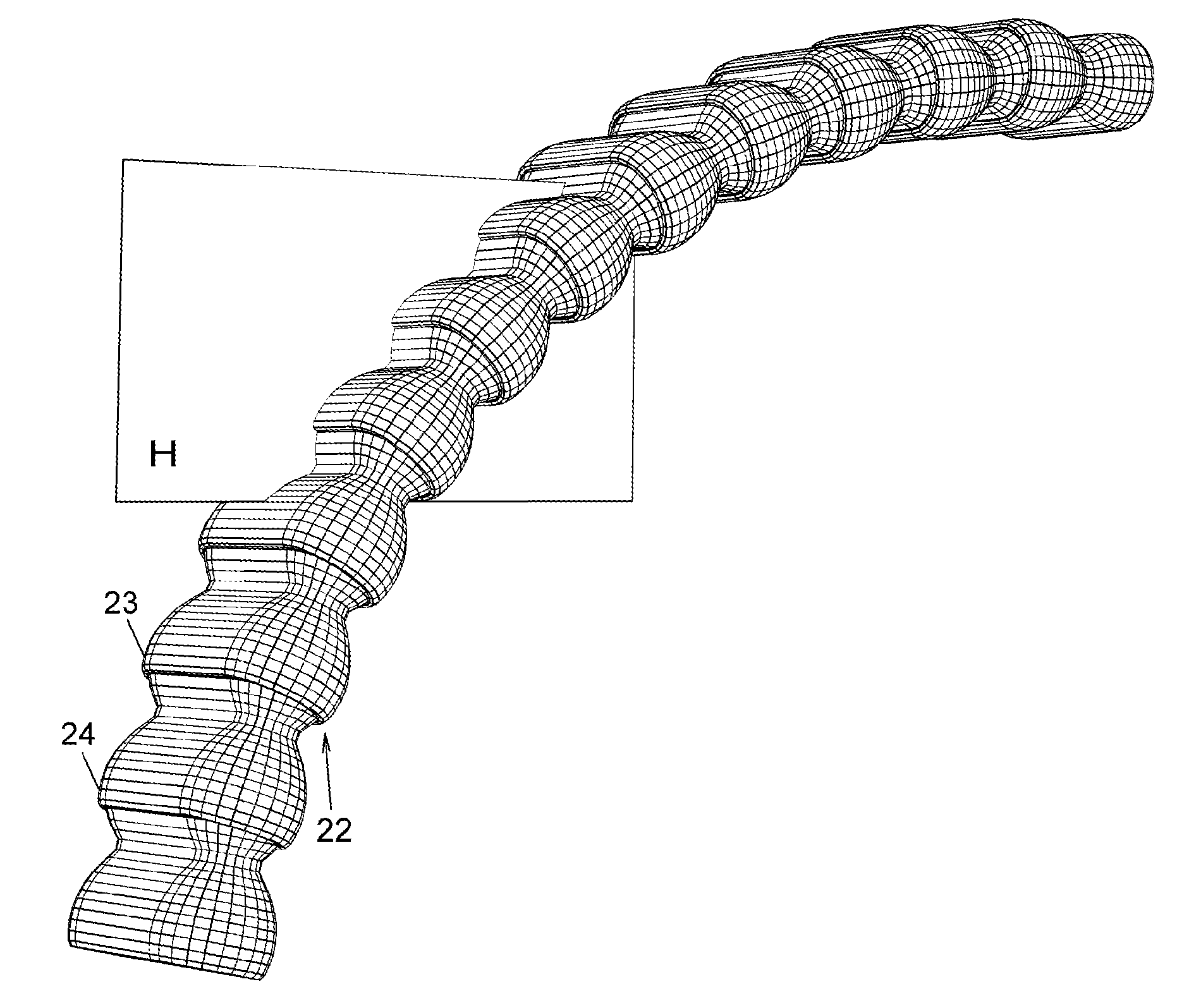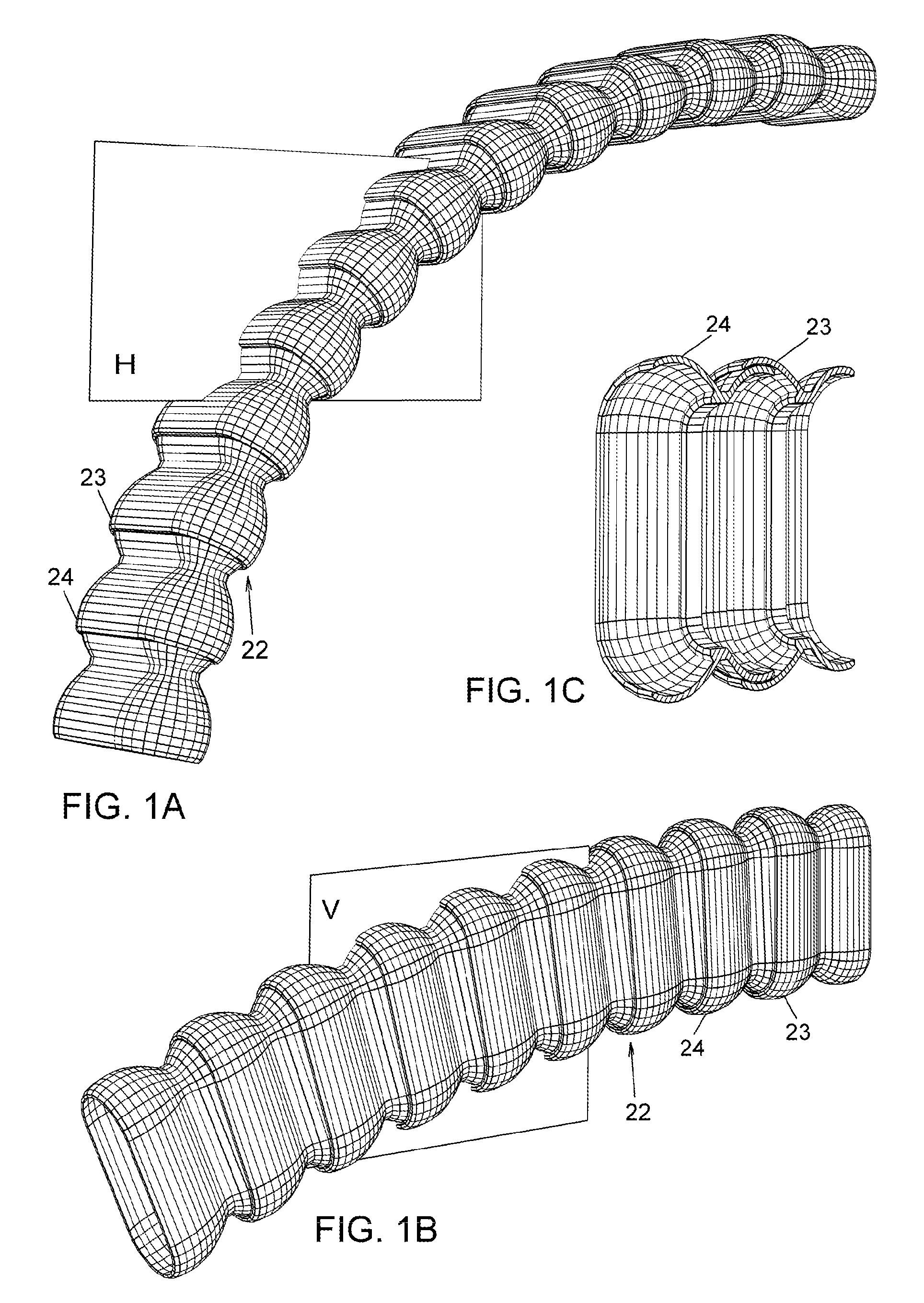Flexible Arms of Low Footprint and High Weight-bearing
a flexible arm and high-weight technology, applied in the field of flexible arms, can solve the problems of low weight-bearing, unidirectional weight force unidirectional orientation of ineffective counteracting of unidirectional weight force circular orientation of structural elements, so as to increase the weight-bearing effect and reduce the footprint of flexible arms
- Summary
- Abstract
- Description
- Claims
- Application Information
AI Technical Summary
Benefits of technology
Problems solved by technology
Method used
Image
Examples
embodiments
[0044]Flexible arms are bendable structures that can be reconfigured by applying force on the parts of the arm. Embodiment 22 is a novel flexible arm of joined beads. It is easily bendable and reconfigured by the hands of the user in three dimensions. While the entire bending of arm 22 shown in FIG. 1A lays on the horizontal plane H, the whole bending of arm 22 in FIG. 1B lays on the vertical plane V.
[0045]Novel arm embodiment 22 comprises a plurality of joined beads 23 and 24. Each bead has an arcuate tail portion of reduced size formed therein, whose outer surface enters and frictionally engages with the arcuate inner surface of the head portion of a contiguous or immediately adjacent bead. In other words, the outer surface of a bead is engaged with the inner surface or recess of a contiguous bead. Thus, head-to-tail mating beads of the flexible arm have swivel joints. Mating beads can swivel by sliding against one another when forced by the user's hand(s). The arm is simple and r...
PUM
 Login to View More
Login to View More Abstract
Description
Claims
Application Information
 Login to View More
Login to View More - R&D
- Intellectual Property
- Life Sciences
- Materials
- Tech Scout
- Unparalleled Data Quality
- Higher Quality Content
- 60% Fewer Hallucinations
Browse by: Latest US Patents, China's latest patents, Technical Efficacy Thesaurus, Application Domain, Technology Topic, Popular Technical Reports.
© 2025 PatSnap. All rights reserved.Legal|Privacy policy|Modern Slavery Act Transparency Statement|Sitemap|About US| Contact US: help@patsnap.com



